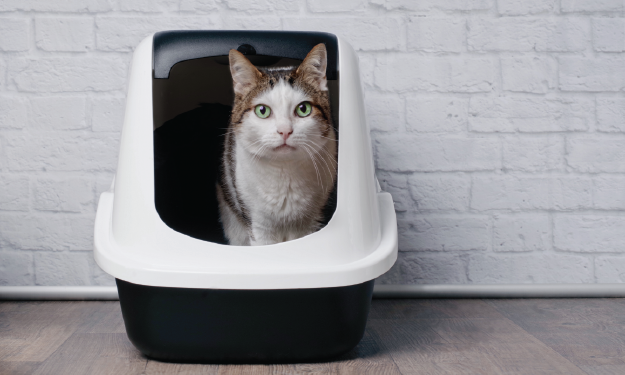Urinary Blockages in Cats

Written by Rocio Carrasco, ECC Clinical Floor Supervisor
Urinary blockage, or urinary obstruction (UO), is a very common disease that occurs mostly in male cats but may also affect dogs and female cats. It is a life-threatening emergency that must be seen immediately by a veterinarian.
What is a Urinary Blockage/Urinary Obstruction?
Urinary blockages are caused by the accumulation of minerals in the urinary tract, which can cause a formation of an obstruction by crystals or stones. There can be other less common causes such as tumors, lesions and scar tissue as well.
If not treated, urinary blockages can be fatal.
Symptoms of a Urinary Blockage
Some symptoms to look out for are:
- straining to urinate
- blood-tinged urine
- accidents outside the litter box
- lethargy
- decreased appetite
- vomiting
How do I know if my cat is straining to urinate?
When cats are straining to urinate it may seem like they are constipated. They may be going in and out of their litter box multiple times, producing little to no urine at all. You may notice your cat crying, howling when trying to urinate or notice odd signs like hiding or showing unusual behavior.
What to do if you think your cat is blocked
It’s important for cats to be seen right away by their veterinarian or an emergency vet if he/she is showing these signs due to the critical nature of this disease. Urinary obstructions can cause acute renal disease from increased pressure in the renal system and the inability to eliminate urea and other waste through the urine.
If left untreated, a urinary blockage can lead to kidney failure and death within 24-48 hours.
What you can do to prevent your cat from getting blocked
There are a few preventive measures you can take to help avoid a urinary blockage:
- keep your cat hydrated
- provide plenty of enrichment/toys to reduce stress
- keep the litter box clean
If your cat has shown symptoms of UTIs or has had a urinary obstruction before, ask your veterinarian if a urinary health prescription diet may help. These are specially formulated to promote a healthy bladder and help dissolve struvite stones and calcium oxalate crystals.
If you’re ever unsure if your cat or dog is suffering from a urinary obstruction, don’t hesitate to give us a call or come straight here. Time is important in these cases! We are here for you 24/7/365.